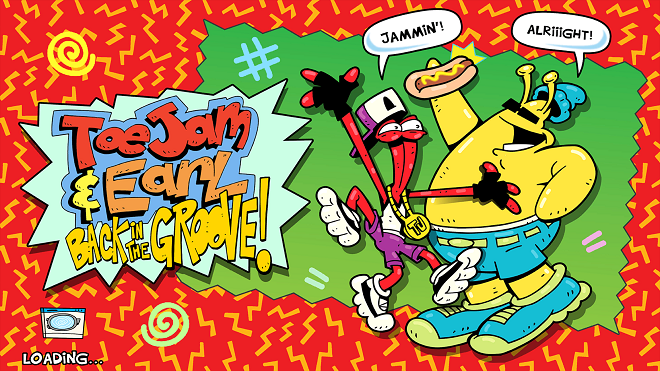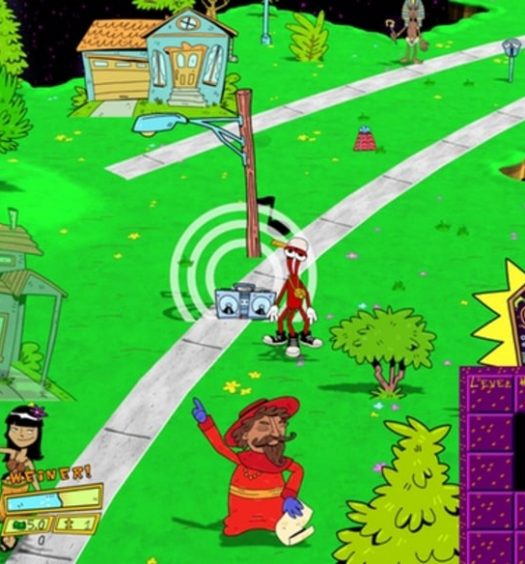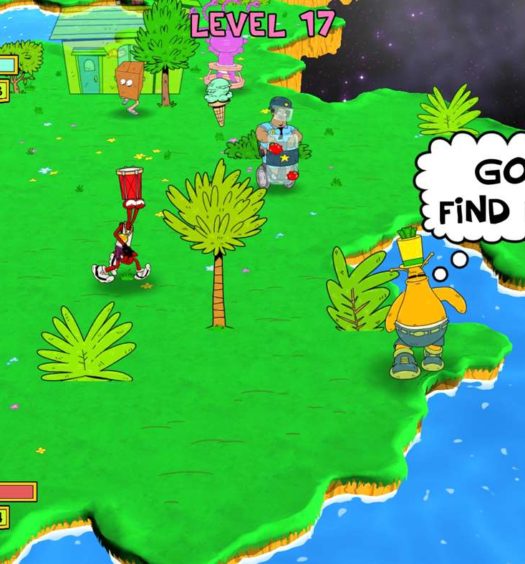My first experience with the roguelike genre was in 1991, with Sega’s Dragon Crystal, a Game Gear launch title. Of course, at the time I didn’t know that’s what it was. I just knew it as an action game where the mazes were totally random each game, as was the loot available throughout those mazes, and that there was no way to save my progress when I died. About the same time, Sega published Fatal Labyrinth for the Genesis, which was very similar to Dragon Crystal, but unfortunately neither got too much attention in the North American market. However, a roguelike with a decidedly American flavor did appear that did get noticed: ToeJam & Earl. Nearly 20 years later, the eponymous hip-hop aliens have returned to Xbox One in ToeJam & Earl: Back in the Groove.
While Sega is not connected to this release, HumaNature Studios, the team behind this latest outing, is helmed by Greg Johnson, one of the original designers. Once again, the three-legged ToeJam and the rotund Earl make an unplanned landing on Earth while out on an intergalactic joyride. To make their way back to their homeworld, Funkotron, they must locate the ten separate pieces of their spaceship while avoiding a rogues’ gallery of both helpful and malevolent Earthlings. This time, up to four players can work together exploring the randomly-generated levels to find the parts, either in split-screen co-op or via Xbox Live.
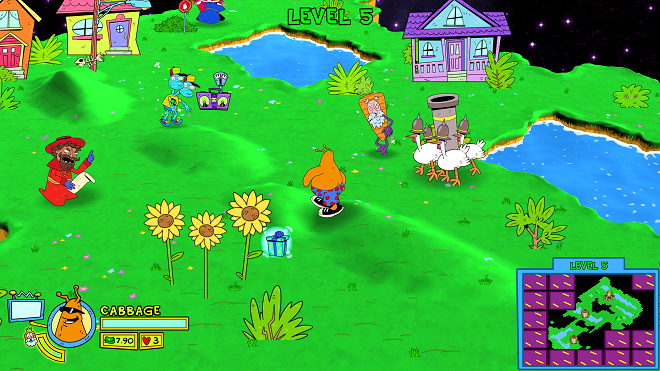
Here’s what I liked
Old, yet new – Immediately upon launching Back in the Groove, vivid memories of playing the original game back in college began to return. The game’s randomized levels appear as islands in space, just as they did before. The characters are still 2D sprites, although they are far more detailed and animated. The music is peppy and downright infectious, complete with callbacks to the original tunes. Most importantly, there remains that sense of curiosity, mixed with a healthy dose of trepidation, when opening an unidentified present that has just been collected. While Back in the Groove is primarily inspired by the debut game, there are elements present from its two sequels, Panic on Funkotron and Mission to Earth (which appeared exclusively on the OG Xbox).
More enemies, more friends – Our heroes are not alone on their adventure. Players can choose one of six different characters at the start of each game – old and new variants of both ToeJam and Earl, plus their “fly honeys” Latisha and Lewanda – with three others available to be unlocked during play. Each has different starting parameters and enters with two starter presents. Those presents will help deal with the larger variety of Earthlings that interfere with the adventure. Fortunately, there are also more friendly Earthlings, including the famous wise man in a carrot suit who will safely identify unknown presents and promote (level up) the players, boosting their stats. Both good and bad Earthlings are well-animated and have their own clever sound effects, right down to the telltale sound that the troublesome Boogie Man has found you.
Christmas whenever – Presents are the game’s loot system, and they represent one of the best features of the franchise. Aside from the starter presents each character begins with, all the others in each play session are totally unknown. Opening a present will both identify it and activate it. The fun part is, as noted earlier, that burst of anxiety when opening one. Is it going to be something good, such as food or money? Is it going to be bad, like the one that summons an Earthling out of thin air? Or is it the dreaded randomizer, which undoes all your identification and re-scrambles the contents of the presents? You don’t really know, but you still wanna open it and find out.
Squad goals – Back in the Groove can be played by a single player, but that does eliminate a huge chunk of the fun of the game. Thankfully, there are lots of ways to share the love with others. If you’re hosting your crew at your crib, you and three friends can explore on a single console using one of two different split-screen formats. If everyone’s hanging at their respective homes, you’re just one Xbox Live private lobby away from looking for those ship parts. Lastly, if you’re feeling particularly extroverted, you can join a random game session, or allow others to join your session via Xbox Live.
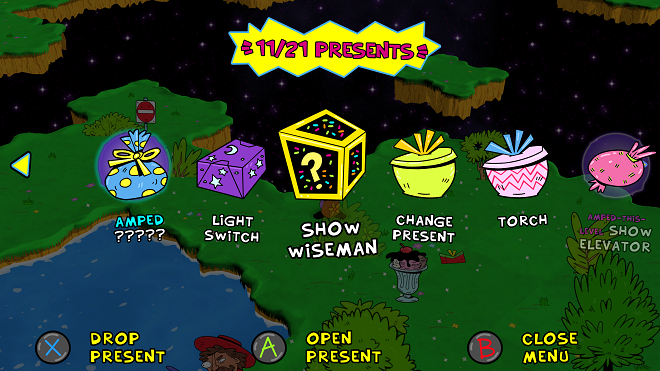
Here’s what I didn’t like
A fine grind, but still a grind – In all honesty, there are times when the game’s format starts to grow on you, and not in a good way. Instead of enjoying the environment and the humor, you find yourself just scouring the levels to find the ship part or the elevator to go to the next level. The level identifier at the top of the screen displays an icon when a ship part is present, which will help players decide if it’s worth the effort to more fully explore it. Even if you’re familiar with the game’s concept when you first start it up, you still need to play through the starter worlds for a time before you unlock the ability to play in the random levels for which the game is famous.
Not-so-hip controls – The game’s controls are overall simple to learn. Players have a jump/sneak button, an interact button, a button to bring up the list of available presents and a “pulse” feature that helps determine if a scenery object is hiding something. (The ship pieces will always be in plain sight, fortunately.) However, and perhaps in deference to the game’s primary goal of exploration over action, the response to those control inputs sometimes isn’t very quick. There can be a perceived lag between a button press and the desired function, which is most noticeable when jumping. In a game where missing the jump can send you back down to the previous level (and possibly deep peril, depending on where you land), precise jumping is helpful. Similarly, bringing up the list of presents pauses the action, but only to a limited degree. Some enemy characters will keep moving, especially if they have spotted you, and will approach you but not attack even while you’re searching presents. This means you’ll have to hope the present is already known so you can put it to good use almost immediately. This isn’t a real-time strategy title, so I would think that all movement would pause in a menu situation.
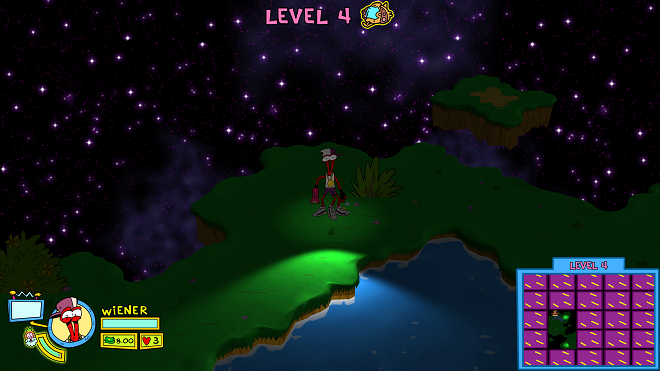
Wrap-up
The original ToeJam and Earl is a pretty good microcosm of the early 1990s, complete with its aesthetic roots in hip-hop culture. HumaNature has successfully brought the duo into 2019 with a thorough update that maintains that same aesthetic, while adding in more up-to-date components. For the uninitiated, the game will feel … um, “fresh” … while old-school gamers will have plenty of nostalgia combined with new references everyone will get. With the holiday season upon us again, having this game handy for party guests would amp up any gathering. You’ll have to provide your own carrot suit, however.
Score: Highly Recommended
ToeJam & Earl: Back in the Groove was developed and published by HumaNature Studios. It was released on March 1, 2019 for $14.99. The author was provided a copy of the game for the purpose of this review.

